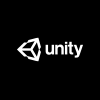The Global Game Jam and beyond series sheds light on the few brave Global Game Jam (GGJ) teams that have decided to take their GGJ projects to the next level and continue development after those challenging 48 hours. We ask each team to tell about their experiences, share learned lessons and offer advise on their attempt to turn their Global Game Jam project into a full fledged commercial product.
During the 2011 edition of the Global Game Jam, the “extinction” theme brought forth an incredible variety of concepts. A familiar looking, but incredibly refined game was Somyeol 2D, created at the Bremen GGJ site in Germany. A young team of students that made the game decided to continue development and released Somyeol. The original GGJ version developed at the Bremen site looked like this:
Its successor, called Somyeol (the “2D” was dropped), has got more features and better graphics and was released on iOS in February 2012. The game uses MadeWithMarmalade as middle ware and was later released our game on all mobile platforms including: Android, iOS, Bada, and Blackberry Playbook and the team is still working on the versions for Windows Phone and Blackberry 10. Somyeol now has more than 100.000 downloads in the Google Play Store and a 4 Stars Rating or higher in all the App stores it’s availabe in, including the Blackberry Appworld store. The final version looks like this:
What triggered your initial consideration that your game was worth to continue development?
The platformer genre is a genre that’s always fun to play. Besides that, it’s not too complex to develop either. Somyeol is limited to 2D and with the multiple characters concept we created a very nice gameplay concept, that differs from other platformers out there.
While working on Somyeol 2D at the Global Game Jam we created an easy to use map editor. Two hours before the final deadline we stopped all coding on the game and focused our last powers on level level design. The map editor really showed us how easy it is to create maps and additional content.

What do you believe was the main element of your game that allowed it to be commercially viable?
We never saw the project as a possibility to earn money or win a prize. It was a ‘just for fun project’ started on the GGJ which, after 48 hours of work it, reached a very nice state. After Casual Connect we were convinced to continue the project but we didn’t want to spend money on things like App Store fees and software licences. First we tried an IndieGoGo campaign to raise 1,500$ to pay for all licenses .We believe the campagin failed because the game was in a too early state to show it to a wider, paying audience. We finally decided on releasing the game in two versions. The first version would be free and include advertising. The second ad-free version would be available for $1,99 in the iOS App Store and include an extra level pack. The difference between the free and the paid version is very small for a reason: it is more important to have someone playing your game, than to have someone pay for it.

How did you manage the step to go commercial in your team?
In the first place we are friends and not business partners, so we decided to make it as fair as possible. We have three people in our team. There is an artist, who is not very active since he’s got another job. He doesn’t want to earn or lose any money with the project. So the two of us (Jannik and Kolja) agreed to split our time, money and responsibility 50/50. Planning was very easy because we are all friends and had a lot of open talks about our plans.

What were the three most important experiences/learned lessons and/or challenges that you had while further developing your game?
It was very important to have explored the entire process of releasing a game, from starting with coding and art, researching market and the possible audience and finally to starting a small company and bringing the game to the market. Tools that we used to quickly get started on the cheap were the open source image editor GIMP and VisualStudio for our graphics. We chose Bazaar as our version control system.
We learned a lot about game development as well . For example we learned how to get your game running smoothly on low power devices with an acceptable performance. Team member Kolja also visited a course about game design at a local university to learn how a good game loop works or how to write other parts of games. This really taught him how to write code that uses the graphics hardware in the best way possible.
First of all we had to have in mind that we were developing for a low power device, so you can not simply make some fancy calculations to get everything to run smoothly. For example, the menu wasn’t developed with the focus of speed and runs much slower than the game.
The hardest calculations in Somyeol are the physics and the collision, so we decided to run these tasks with a lower refresh rate, but the drawing of the graphics is fast and it runs at 60 FPS so the user never sees any lag.
The best resource to figure these kind of things out are developer forums and example code from other developers having figured out solutions to the same or a similar problems. A lot of developers freely share these insights, so you can see their way of solving a problem and try out their tricks to make your game run faster.
Working on Somyeol, we’ve learned a lot about the gaming business as well. With the ongoing process of having the game on the market, my interest in the game business started to grow, mainly because it is a possible future area of work. For example I’m not happy with the development of ‘free to play’ business models in which the player is being exploited by various gambling methods.
If you want to money with your game, you really have to study and understand the different business models that are out there. Have a look at each of them and pick the one that fits your game the best.
We decided to release Somyeol with two different models, because we wanted the costumer to have a choice. The first model is a very traditional one: we sell the game for $0.99 cents and you get the ads removed from the game. The second one is ad-supported, but it is free to download and play. The second version is good because you get a large install base and that’s what we initially made Somyeol for.

In your case, what did you learn from getting the game out to the public?
First of all, don’t expect your game to be the next Angry Birds because in order to release a game that successful you need a lot more than only one or two developers coding in a basement. Angry Birds is not Rovio’s first game, they grew and learned by iteration. A game needs a very good ‘big idea’. If you have a working prototype you only have less than 5% of your work done.
Second, things like graphics and sound are important as well, because people will see your game being played on a friends device or might stumble across a trailer featuring your game. It needs to look good.
Finally, the process of getting everything just perfect is a really hard job. Sometimes it’s about accepting that you have to replace old stuff by something better. When you spend a lot of time on something like a game you’ll get tunnel vision and don’t see errors. That is why you need some distance or have other people around to tell you what’s good and what’s not. For example, we spent a lot of time to get the user input to work the way we thought it would be best. However, the game didn’t have a tutorial explaining it to the user so a lot of reviews complained about the bad controls. We decided to implement Gameboy-like controls and still keep the old input method as an option in the menu.

What kind of tips would you give to other GGJ participants who might decide to continue developing their project?
1. Be open and share a lot of your experiences with the gaming community.
2. Talk to other people and show them your game, they can give you very important feedback, because looking at your own game makes you blind for certain things.
3. If you have a game that has potential then take the risk and start a small company. However, don’t risk living on the street if this project fails.
4. Work with a friend on a regular basis and drink lots of coffee or energy drinks.
5. Plan your schedule as tight as possible and don’t release your game too early. And remember, you can patch your game as much as you want but you can’t get rid of bad ratings. Maybe start with a smaller project first to get your workflow straight with applying content to the various App Stores out there.
Somyeol for iOS can be downloaded here. Get the Google Play version here.
Comments









